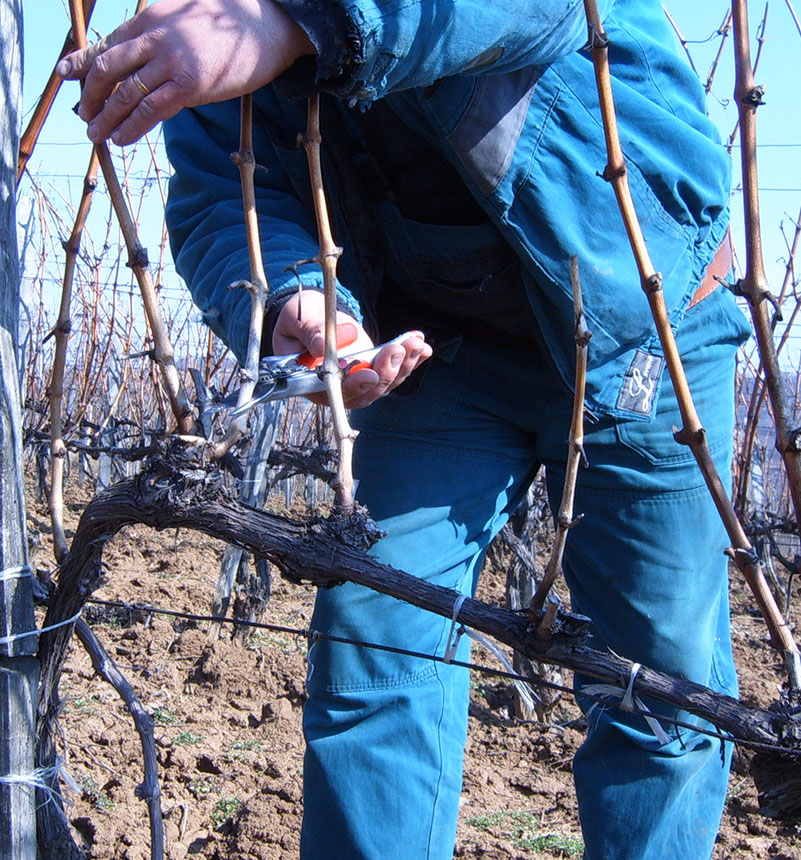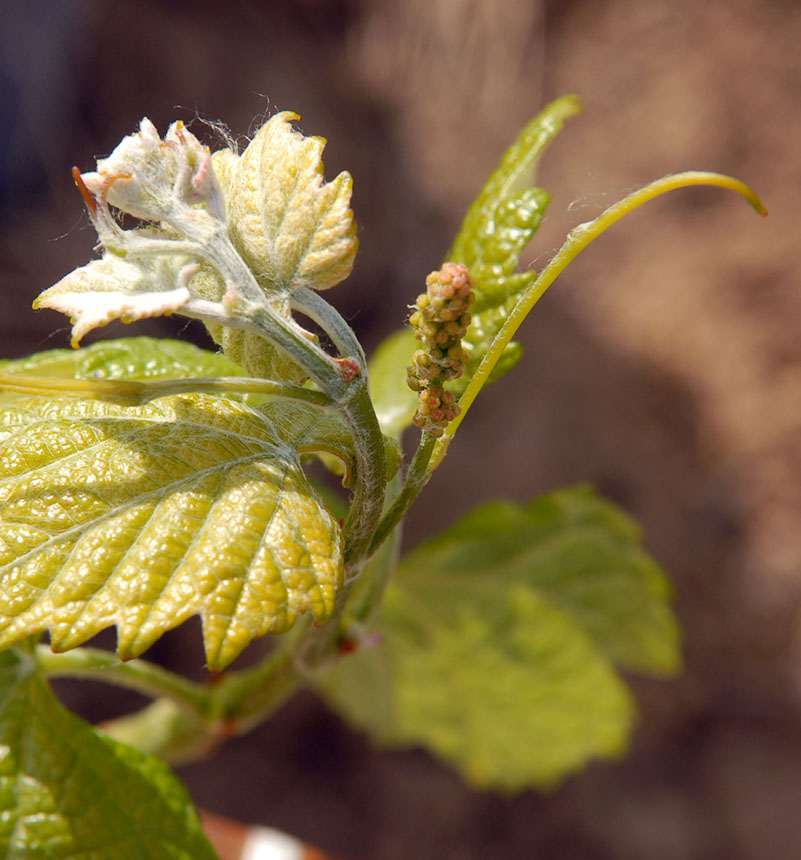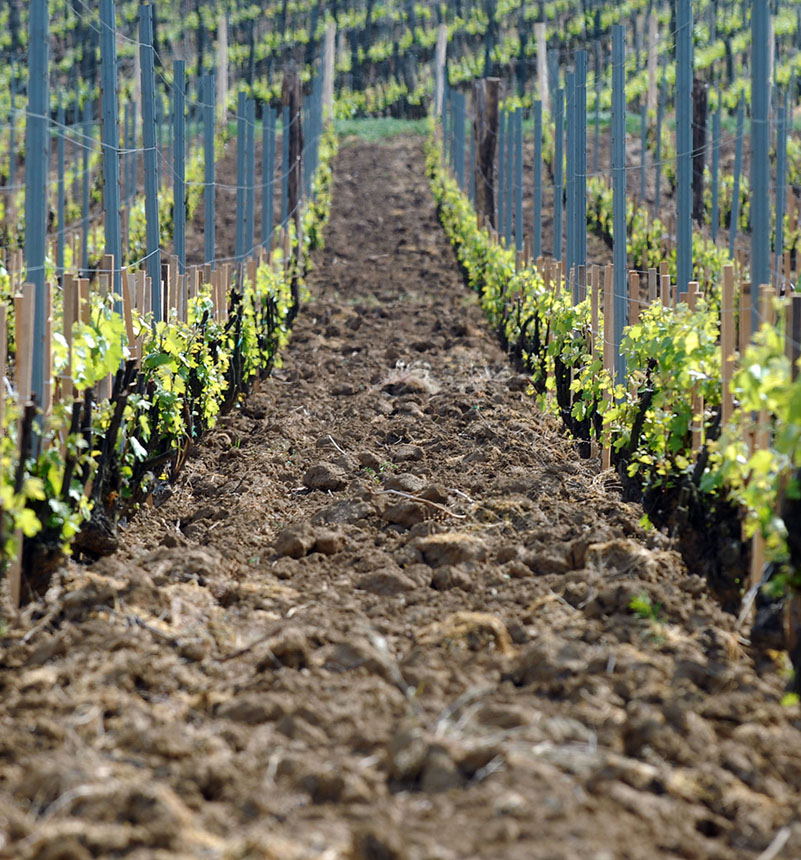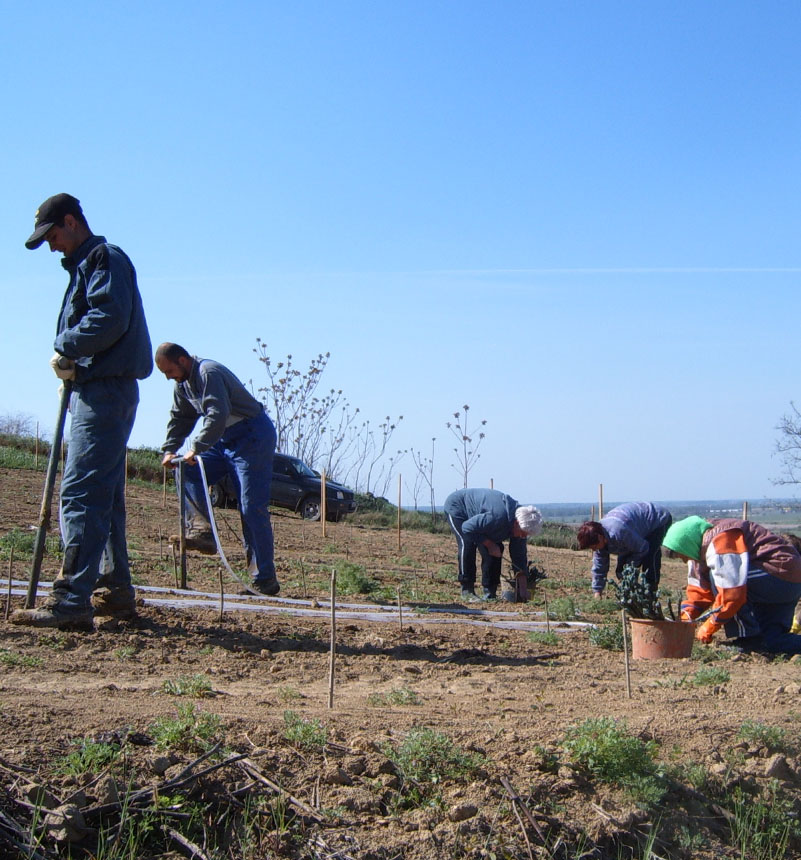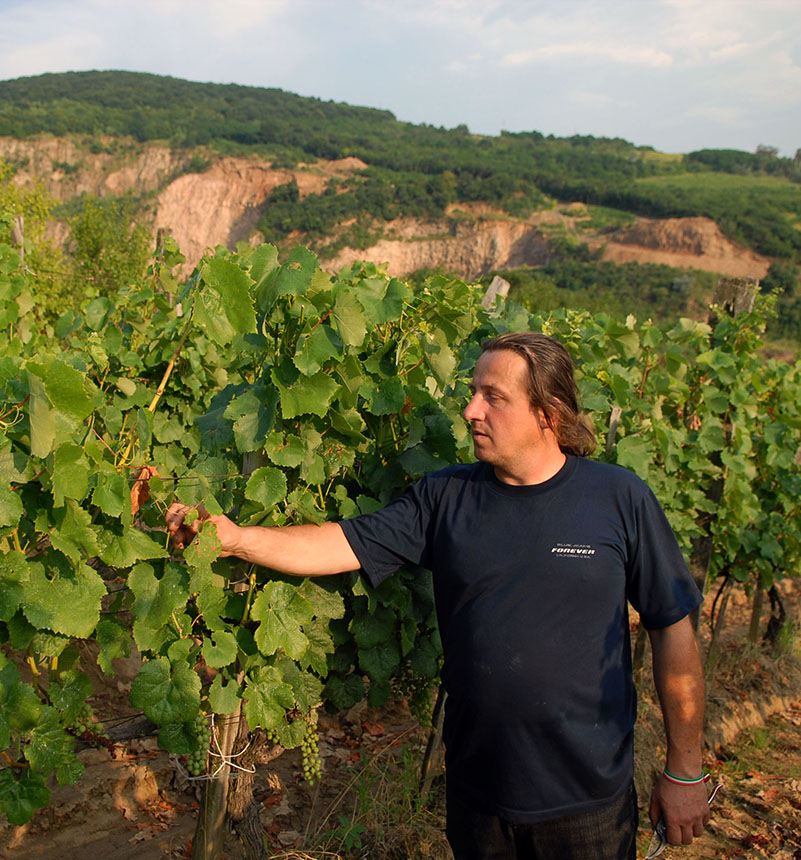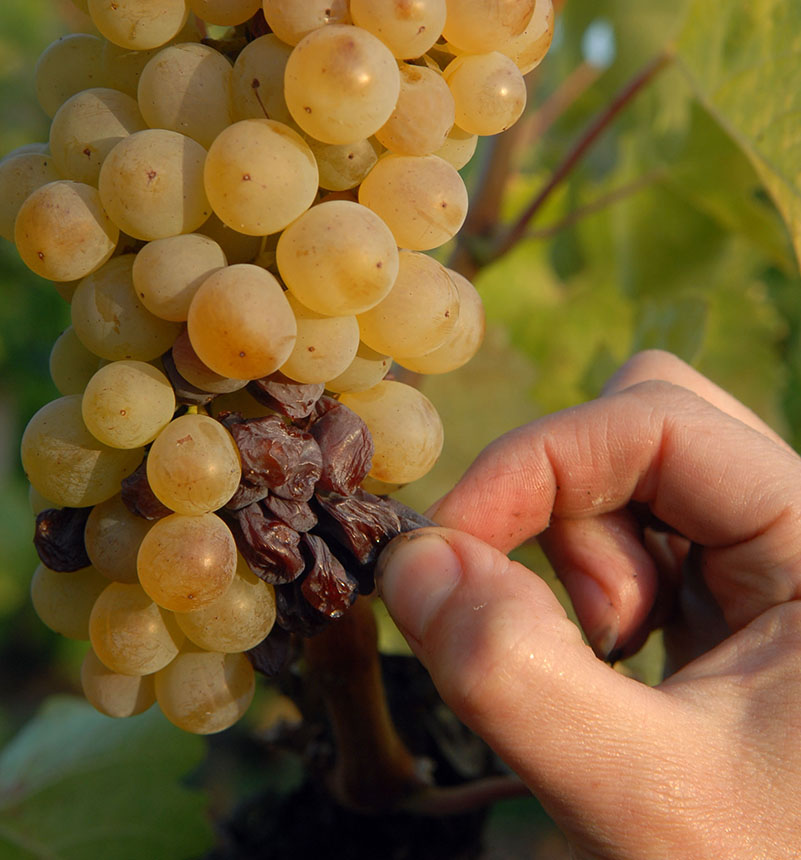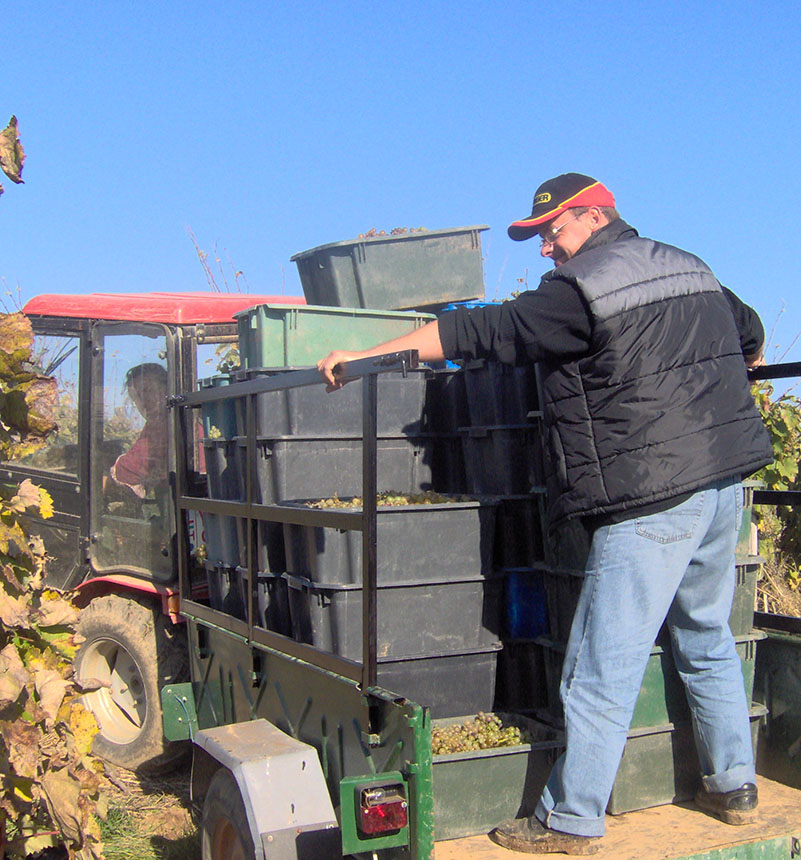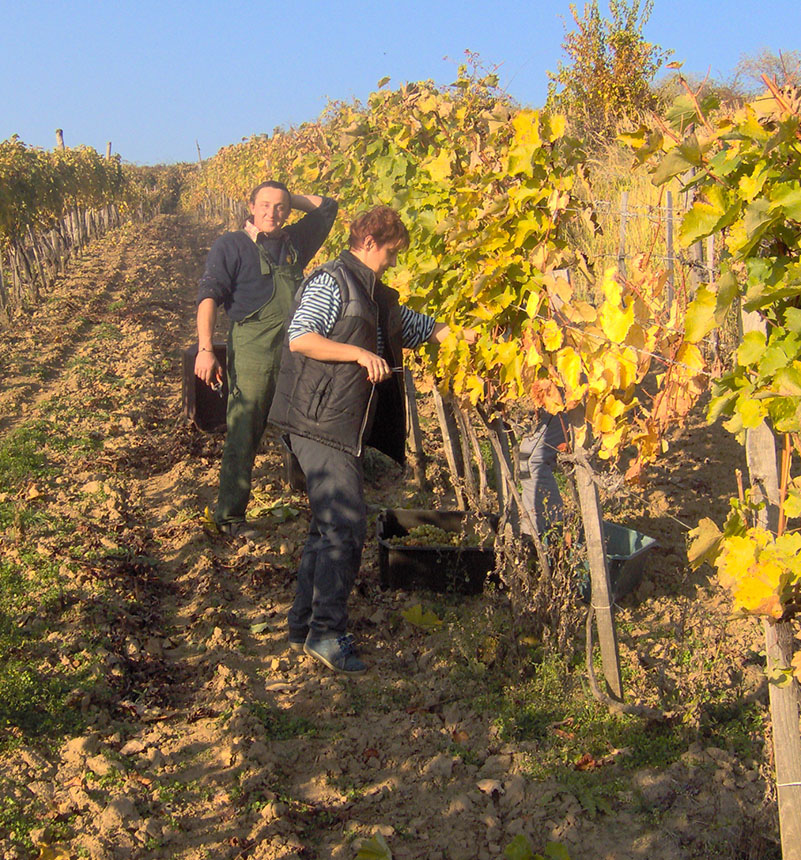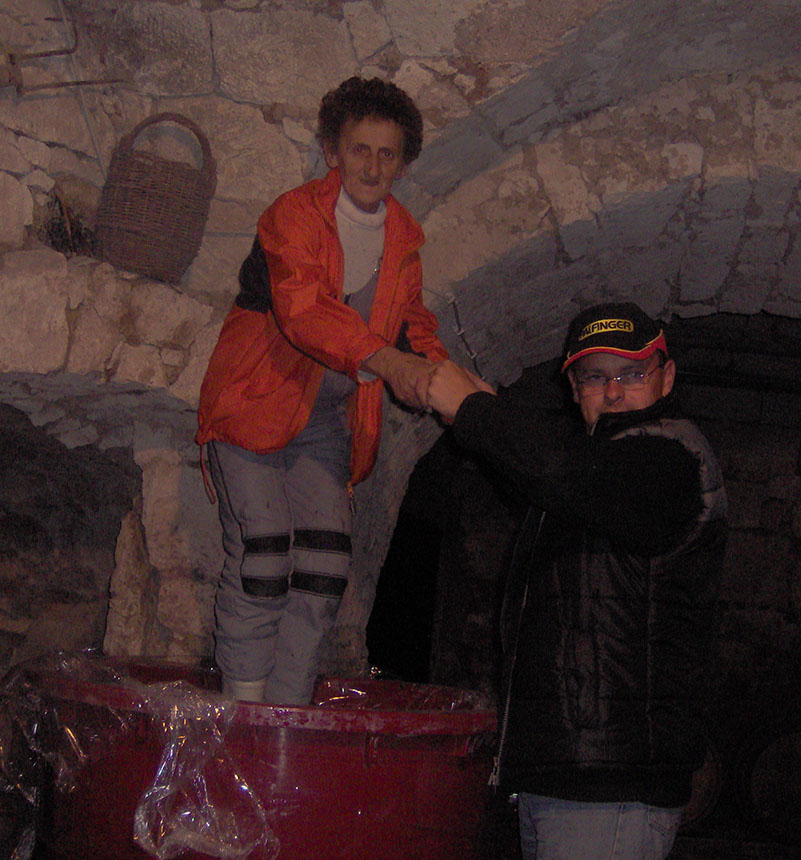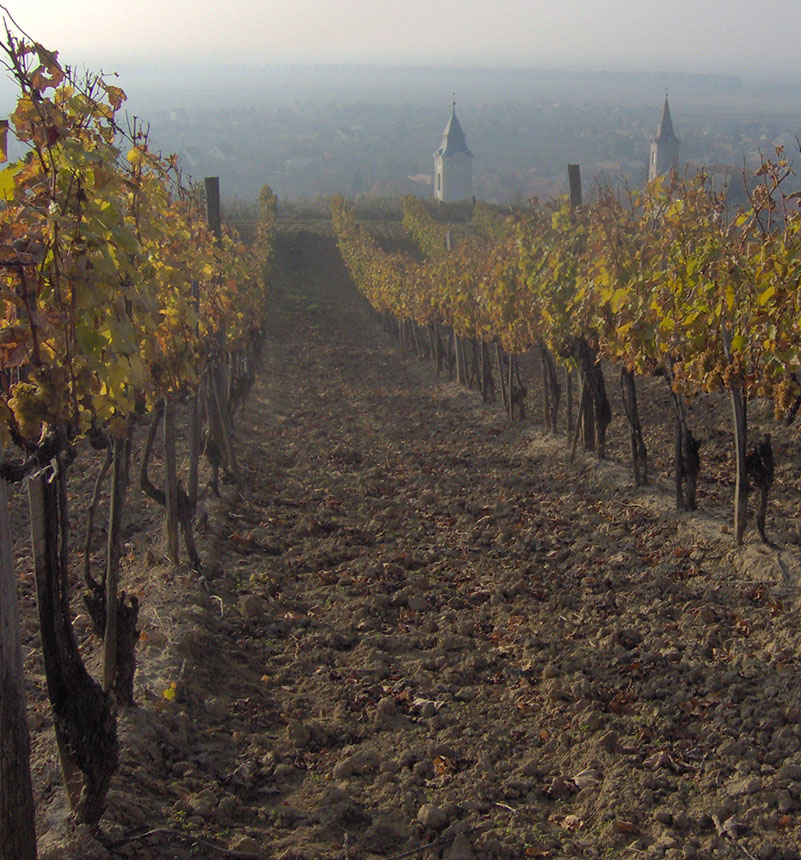Vineyard
Our lands are located around Tarcal, one of the most southern villages in the Tokaj Wine Region.
Currently we cultivate 7 hectares (in 6 different vineyards).
Height of the vineyards: 150-280 m
Aspect: south, southwest, protected from the northerly winds
Average age of vines: 30 years (5-46 years in 2012)
Density: 4500 vines/ha (2800-5500)
Annual average production: 24 hl/ha
Soil: loess on volcanic dacite, perlite bedrock or scree
Grape varieties: 60 % Furmint, 40 % Hárslevelű
No. of bottles annually: 14 000-18 000 bottles
Our vineyards
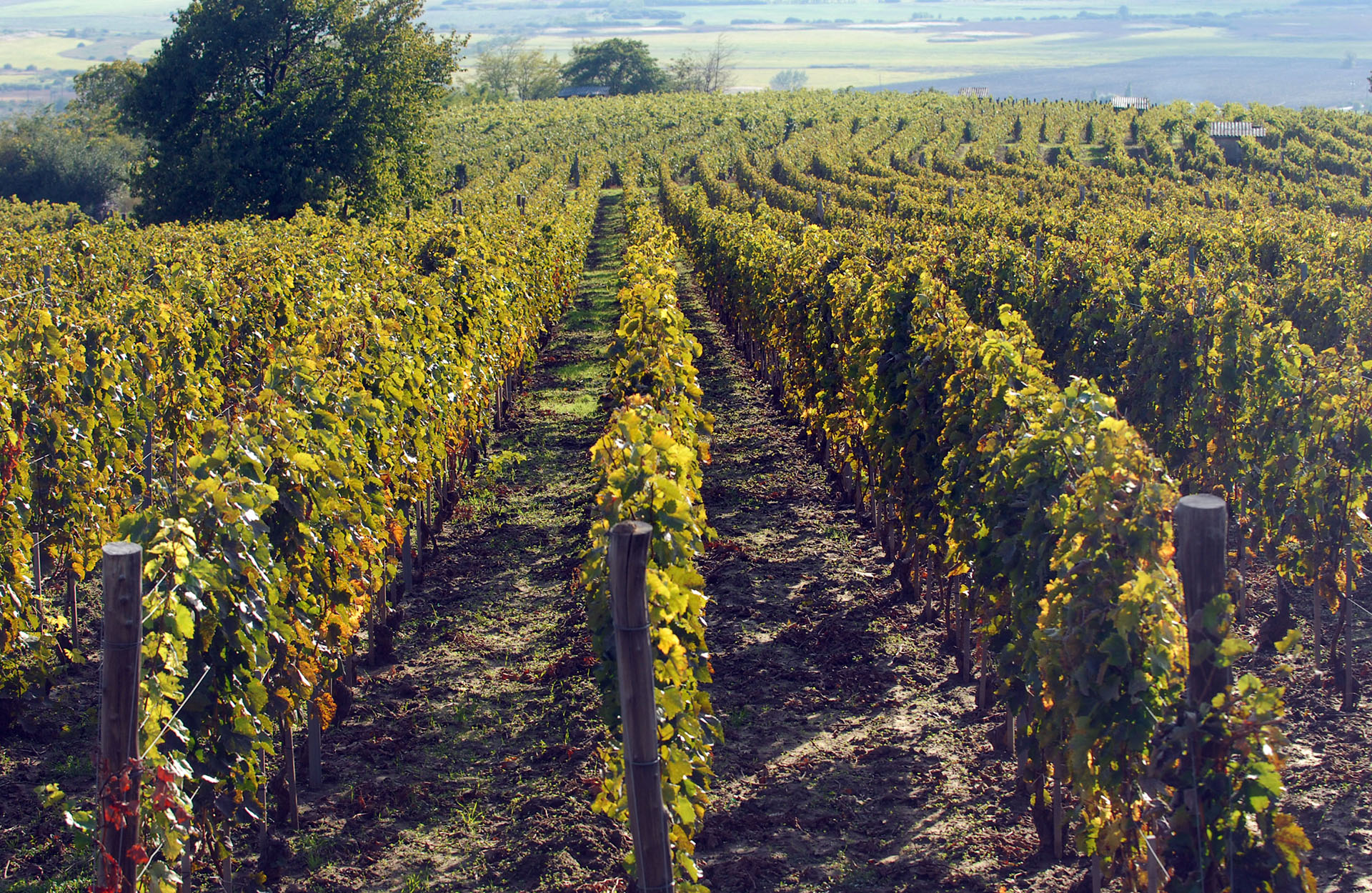
Középhegy-Lónyai
It was part of the Lónyay family estate. The first mention dates to 1670.
Recent owners: Lónyay, Bercsényi, Szirmay families, jesuit of Kassa, Buttler, Dessewffy, Erdődy, Olcsváry, Sváby, Szakmáry, Szemere, and Túróczy families.
Area: 1.6 ha
Aspect: south, southwest
Height: 195-220 m
Vines/ha: 4500
Planted: 1970-2002
Age of vines: 10 % 10 years, 90 % 27-42 years
Grape varieties: 70 % Hárslevelű, 30 % Furmint
Soil: 60 cm Ramann brown earth soil, loess in deeper layers
Character: wines exhibiting true loess nature are born here: fragrant, citrus, grapefruit character, fruity, herbal, silky texture, delicate with refreshing cooling acidity
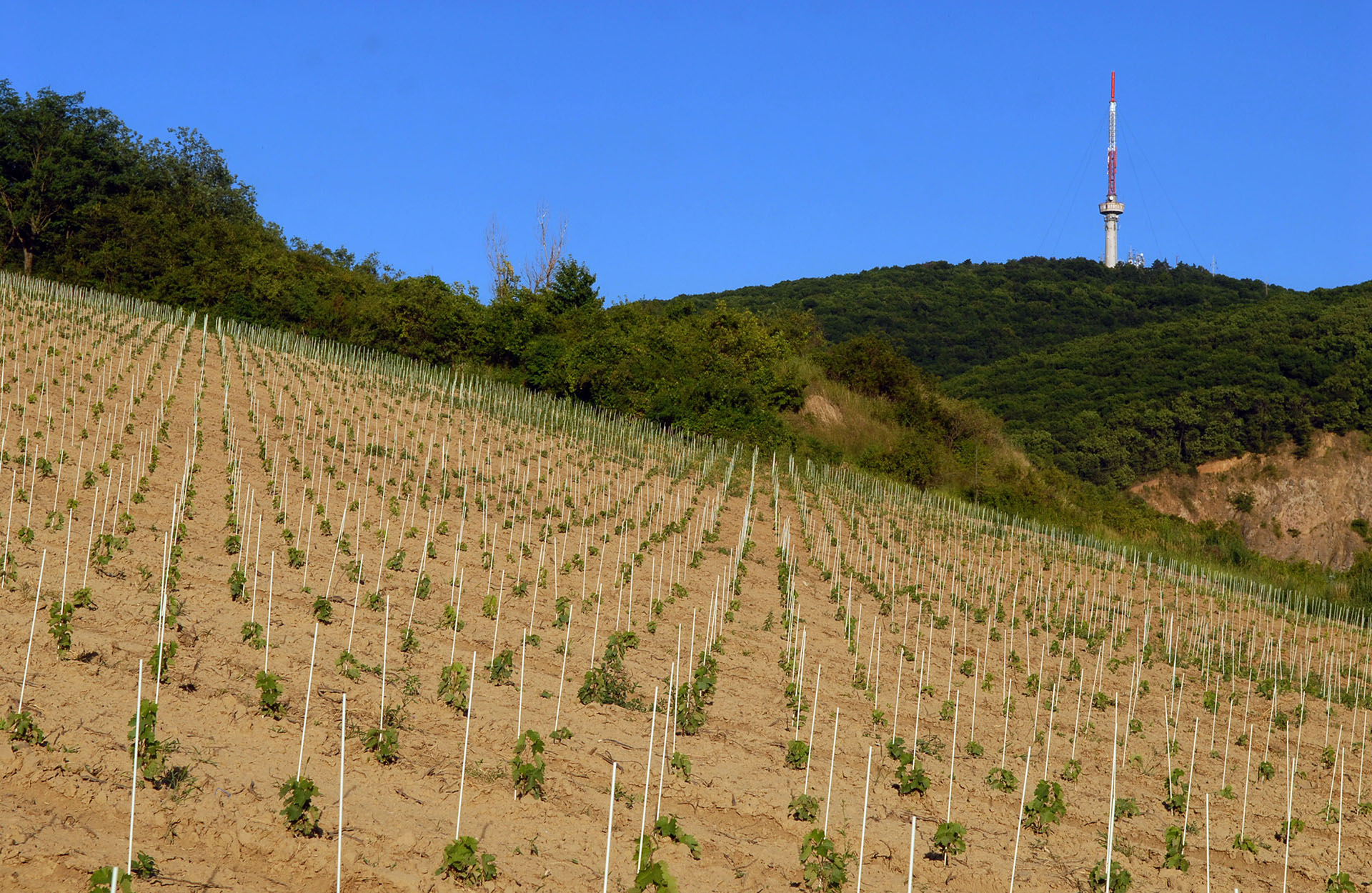
Lantos
It was named after the Lantos family, gentry in Tarcal. The first mention dates to 1671.
Character: this is not yet in production
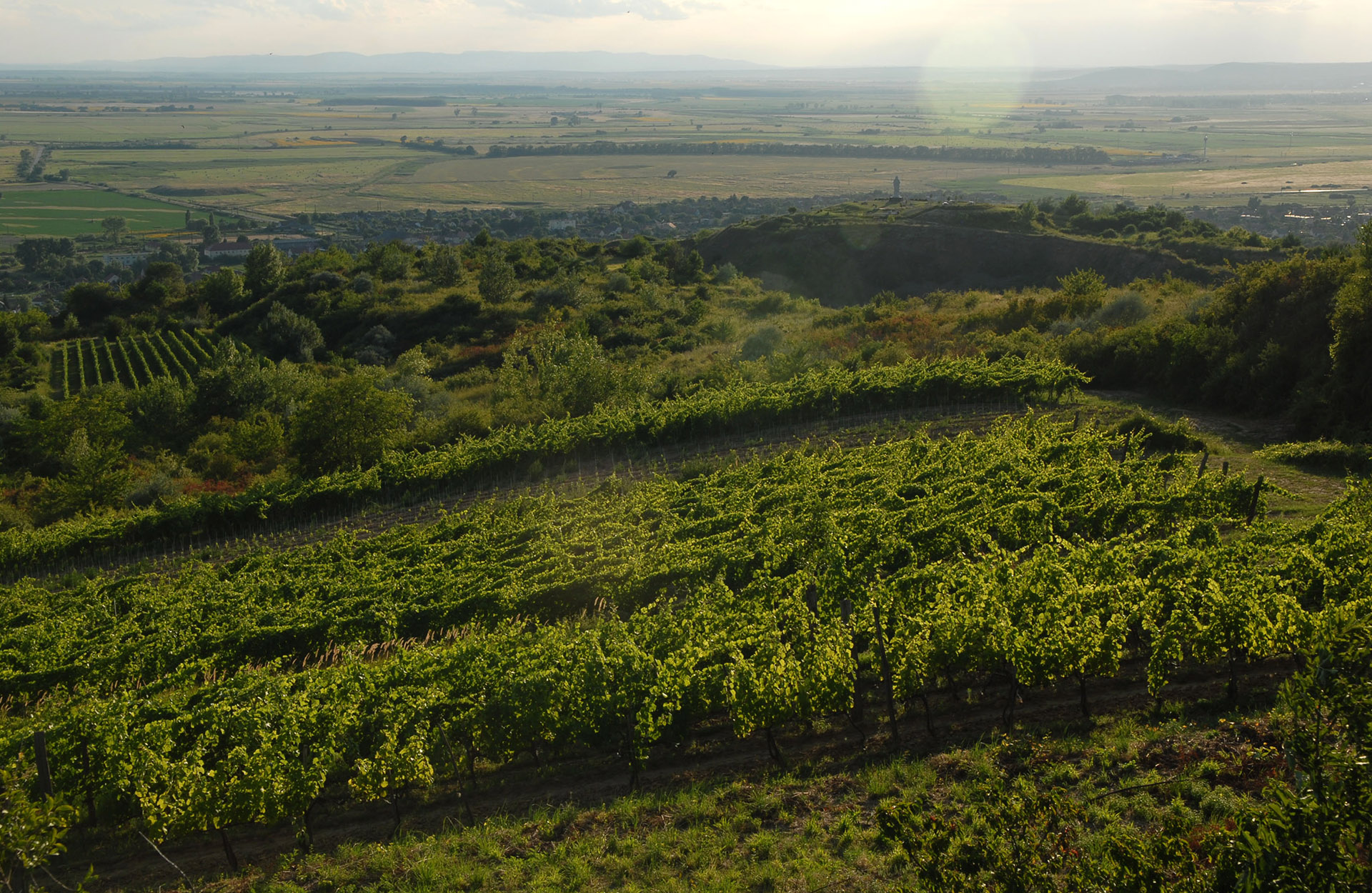
Váti
This estate was the property of the Nagyváthy family. The first mention dates to 1540. “Váti” was one of the vineyards belonging to the chantry priest of the Holy Blood Tarcal parish, Presbyter Fábián that was sequestered by the governor of the Tokaj estate Benedek Serédy.
Recent owners: Presbyter Fábián, Serédy Benedek, Mathi Bertalan, Thurzó family, Nagyváthy family, Rákóczi Zsigmond, I. Rákóczi György, count Rákóczi Pál, count Rákóczi Erzsébet, II. Rákóczi Ferenc, Klobusiczky family, Csáky and Szepessy families
Area: 1,2 ha
Aspect: south
Height: 210-240m
Vines/ha: 4300
Planted: 1970-1985 -2017
Grape varieties: 50% Furmint- 50% Hárslevelű
Cultivation: macro-terraces, medium height cordons
Soil: 1 – 1.5 m loess on pyroxene dacite
Character: the grapes always ripen beautifully in this area with good acid emphasis, saltiness and mineral character
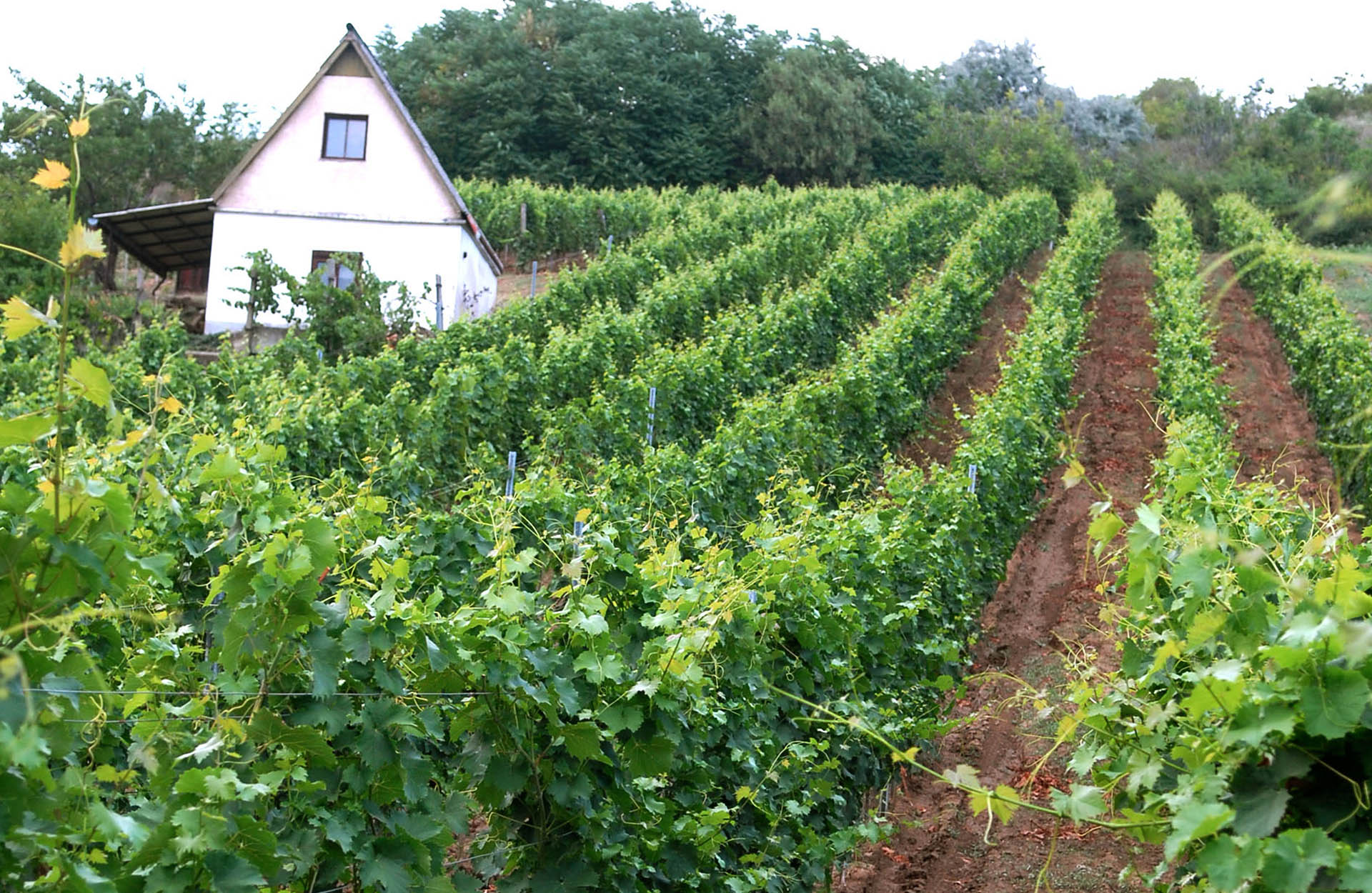
Lestár
From János Lestár (Johannes Lesthar), archdeacon of Tokaj. The vineyard was first mentioned in 1564.
Area: 0,6 ha
Aspect: southwest
Height: 110-150m
Vines/ha: 5500
Planted: 2007
Grape varieties: 100% furmint
Soil: deep loess soil with a slight red hint
Character: warm aspect where the fruit ripens easily. Softer acid structure, Mediterranean and tropical fruits, notes of more dried fruits are clearly discernible in the wine.
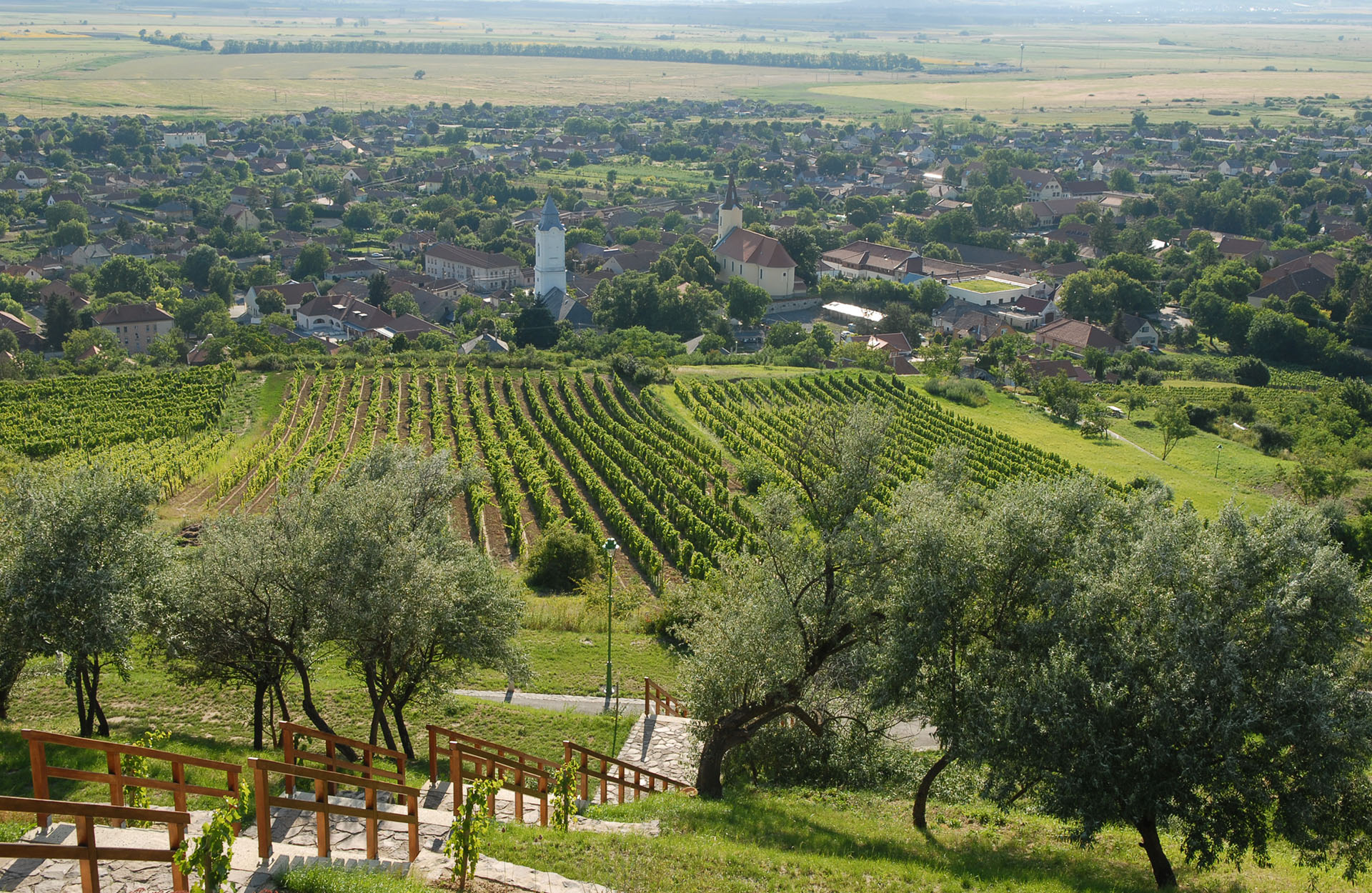
Farkas
This parcel belonged to the Farkas family at the end of the 17th century a gift from the influential Rákóczi family.
Area: 1,1 ha
Aspect: southwest
Height: 150-175 m
Vines/ha: 5000
Planted: 2007, 2013
Grape varieties: 100% furmint
Soil: 1 – 1.5 m loess on pyroxene dacite
Character: a warm protected vineyard where the vines burst into leaf and grapes ripen the earliest of all. The grapes are flavourful but with far less acidity than Váti. The world of flavours includes creaminess, saltiness, exotic fruits. Botrytis settles here with difficulty and shrivelling of grapes is more typical.
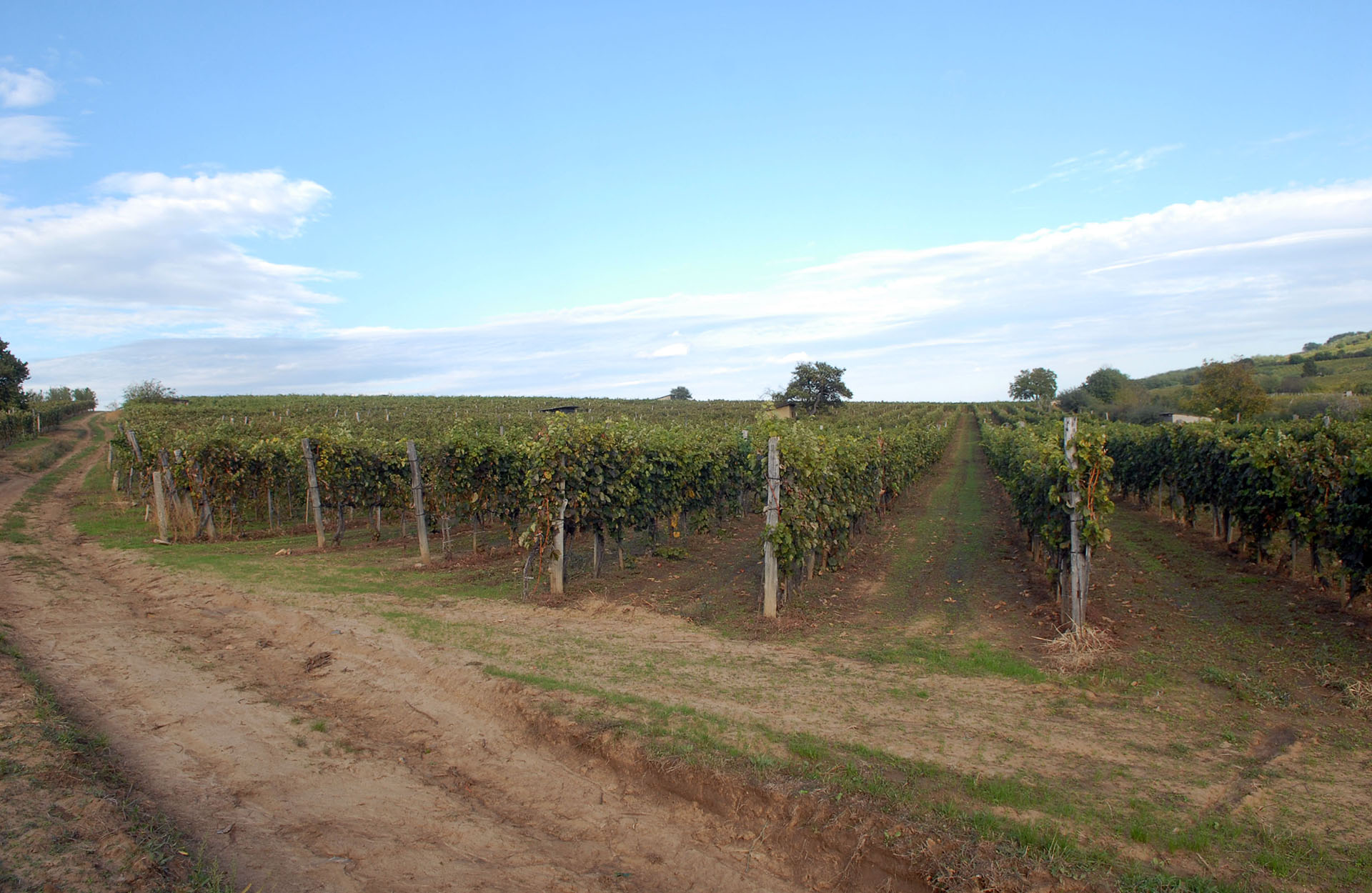
Kassai
Wealthy citizens of Kassa (today Košice, Slovakia) owned vineyards here in Tarcal as early 1492. This vineyard was first mentioned in 1738 when it belonged to the city of Kassa. Indeed, its name most likely originates from this.
Area: 1,5 ha
Aspect: south
Height: 205-220m
Vines/ha: 4000
Planted: 1966-67
Grape varieties: 72 % Hárslevelű, 28% Furmint
Soil: 60 cm Ramann forest soil, loess in deeper layers
Character: it neighbours the Középhegy-Lónyai vineyard. The world of flavours here is similar to that of Lónyai with slightly less finesse but fuller flavours.
Grape varieties
The Tokaj appellation allows 6 grape varieties in the wine region. The most noble and widespread of these native grape varieties are: Furmint and Hárslevelű.
Genetic research has shown that Furmint is a half-brother of Chardonnay and Riesling which are descendants of Gouais blanc. Hárslevelű descends from Furmint.
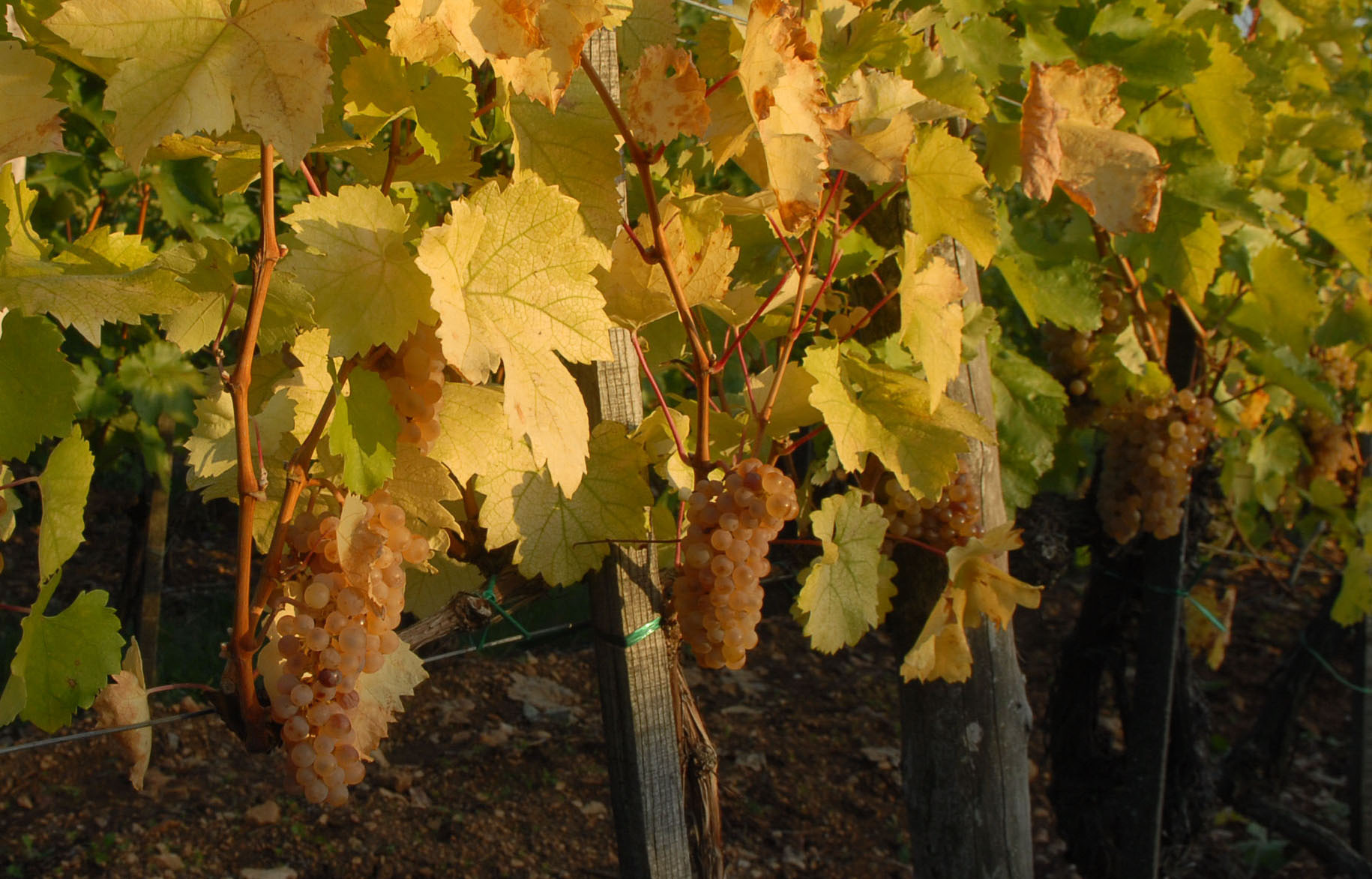
FURMINT
The most widespread variety in the Tokaj Wine Region (60 %) it generally ripens at the end of September. Its bunches are medium large and compact. It easily concentrates sugar and is susceptible to Botrytis. Its most typical aromas and flavours are pear, white fruits, quince, apple and peach (sometimes citrus). Its wine usually has high acidity but when carefully cultivated it has great body.

HÁRSLEVELŰ
The other main variety in the wine region (30 %). Medium-large bunches the berries are smaller than those of Furmint. The bunches are looser and thus it is more difficult for Botrytis to settle.
Hárslevelű wine has deep aromas, flowery with notes of herbs, grapefruit and peach. It gives complex wines with delightful acid structure
Our Cultivation Philosophy
Nature always plays an important role for us. Plants, birds and animals are Zsolt’s passions. We only cultivate our vines in a carefully considered, nature-conscious way which every year becomes increasingly close to organic cultivation where the vintage allows.
We cultivate the soil in autumn and during the year we often leave the plants to grow between the rows. We believe that green ground cover can increase the humus content of the soil and soil life. Sometimes we spread manure too.
We know that vines that are in balance are essential for good wines. Careful cultivation of soil and vine is our fundamental principle
Harvest
We only harvest by hand because this enables high quality selection. We can achieve the perfect must quality through strict selection. It is not rare for us to harvest several times in one parcel. Naturally we collect the harvested grapes in small boxes.
Harvesting at the right time is of key importance: we always take nature of the vintage the vineyard and the micro-parcel into consideration.
We distinguish 4 types of harvest:
- healthy bunches harvest for making pezsgő (sparkling wine)
- healthy bunches harvest for dry wines
- selection of botrytised bunches or part bunches for late harvest or Szamorodni wines
- individual harvest of aszú berries by hand. The aim is to create Aszú wine!



